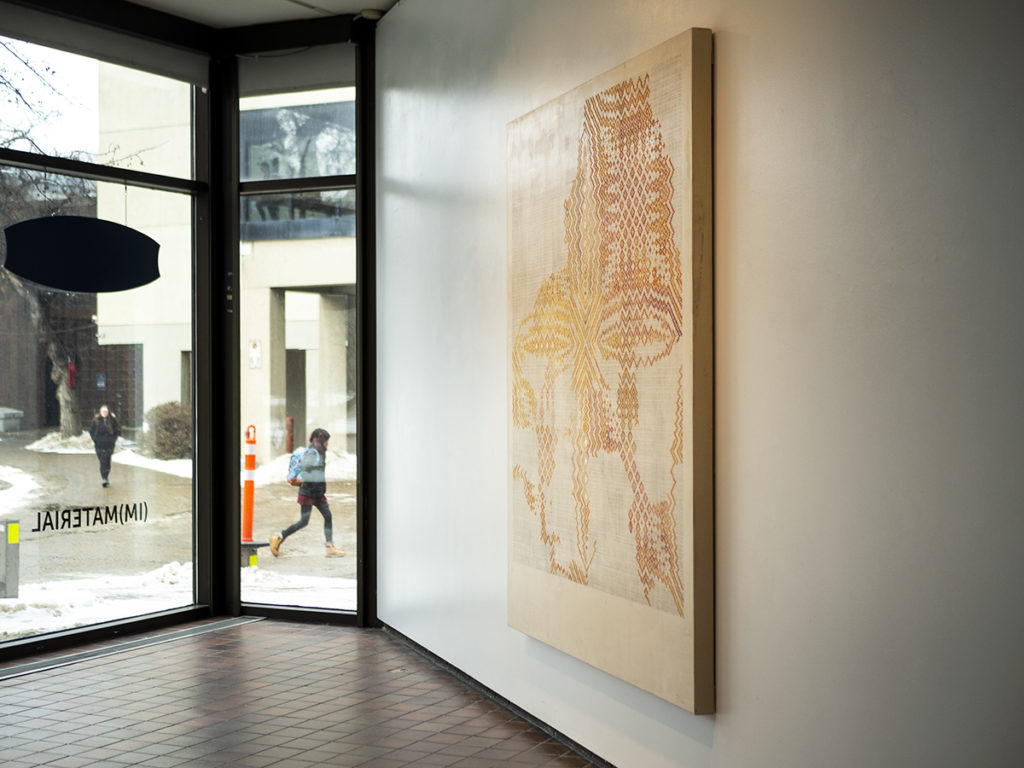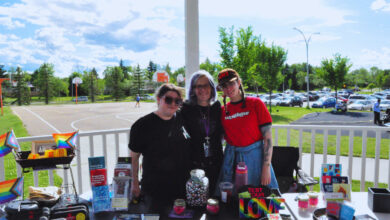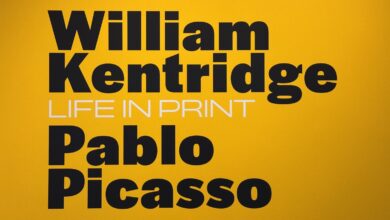FAB Gallery’s “(IM)MATERIAL” questions the way we transmit knowledge
Kim McCollum, a U of A MFA candidate, explores old and new, digital and analog, in her new exhibit
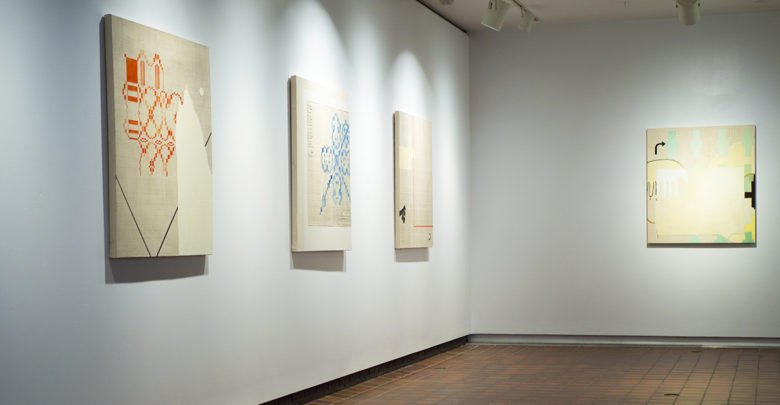 Helen Zhang
Helen ZhangDoes the future scare you? How about the present? When we think of technology, what comes to mind first can often be a certain coldness, in addition to an anxiety-inducing mystique. For artist and MFA Painting candidate Kim McCollum, however, an understanding of our computers’ origins can help complicate this image of an impersonal, impenetrable tech.
“The weaving loom is a catalyst for the first computer,” McCollum said, as she led me through the transfixing forms that adorn (IM)MATERIAL, an art exhibit she created. “The zeros and ones that programmers use to create images on a screen came from cards that would either have a hole or a flat surface, and it would tell the weaving loom what threads to lift. It’s interesting how this really physical piece of machinery that’s operated with the human body eventually led to this digital space.”
The human body is a motif throughout McCollum’s exhibit: hands that are curved like tools, a pair of eyes that hover at the centre of a video-screen, a nose sitting just-so on the far side of a large wall. Still, where all trace of the human form is absent — grids both large and small representing weaving patterns which have been sparsely filled — these works seem to long for the hands that will fill in their gaps.
For McCollum, the unfinished look of these pieces becomes representative of the recent overhaul in the way we transmit knowledge. While a plethora of information is more accessible than ever, it is less common to ask those around us for guidance and explanation when we could just watch a YouTube video, severing the link between generations of tacit knowledge transmission.
“I’m starting to see these figures I make as protectors of some kind, as holders of this knowledge that is slowly evaporating,” McCollum said. “I’m really involved in the Edmonton Weaver’s Guild where there is a […] merging of really young people that are interested in these ideas and older women that are sometimes learning but sometimes experts in this field and it creates this […] intergenerational dialogue that I think is really missing from society in general.”
McCollum’s work is built around a desire for community, working towards a kind of praxis of attention and care, of joy in small things. Among her inspirations are abstract expressionist Agnes Martin, who often worked with grids to create a repeated line that had a grandeur in its pleasurable minimalist simplicity. In addition to being involved in the Edmonton Weaver’s Guild, McCollum owns a studio on the North side called Gather Textiles, where she often holds workshops, one of the most popular being a tutorial on how to make a tea towel.
“There’s a new willingness to engage in this sort of slow making now,” McCollum said.
This level of intentionality is present throughout McCollum’s work, whether it is in the patterns which she had to reverse engineer to recreate herself, or the animation she has created through many individual stills.
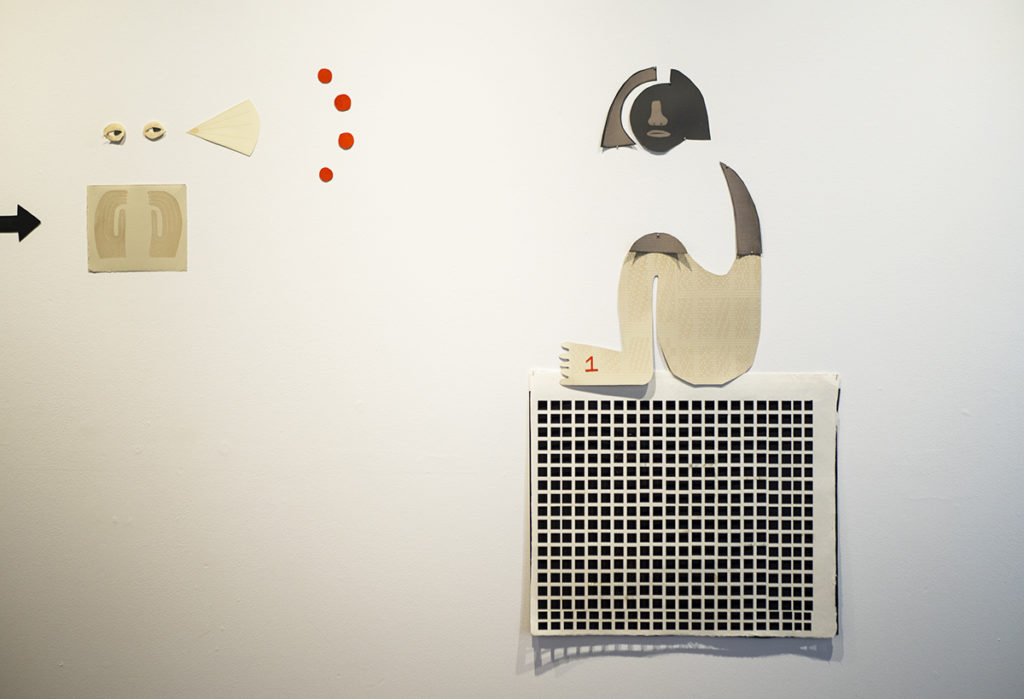
“I’m interested in the value in the searching, and in the careful attention to the little things,” she said. “There’s this idea that in order to be seen, you need to do this really grandiose gigantic bright red painting that really will shock the world. But there’s something powerful in these little acts of resistance or these little acts of engaging with something that can build into an action that’s powerful and has meaning.”
(IM)MATERIAL runs at the FAB gallery from Tuesday, January 21 to Saturday, February 8, 2020.

